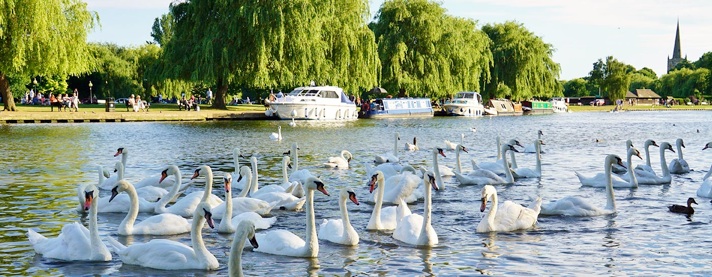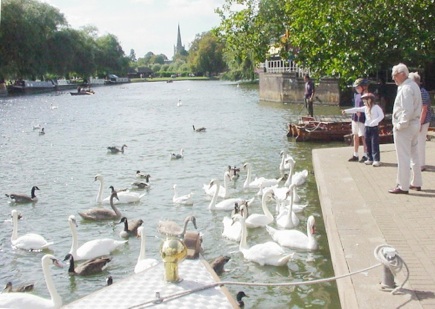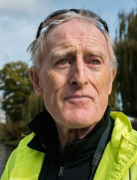SLHS Swans




Disclaimer
Whilst some care has been taken to check externally linked websites no responsibility is offered nor implied for the suitability, legality or reliability of content therein.
Statements are made here to the best of our knowledge. However no statement here should be regarded as irrefutable fact. Please contact us if you consider otherwise.
Beloved Swans
Swans are not migratory; indeed there’s some debate about their origins in Europe. Canada geese used to migrate to the UK to overwinter. However climate change has meant that most now stay here all year round. There are currently ~30,000 here.
All birds have hollow bones -this is especially necessary in a swan so that they sit high in the water which decreases friction when they move. They eat a mixture of water weeds and seeds. They must also swallow grit which their gizzard uses to pulverise hard seeds before digestion.
To keep weight down swans have air sacs ahead and behind of their lungs so that there is a one way continuous flow of air through them. Thus exhaling actually introduces new air to the lungs making them twice as efficient compared to a mammal.
For every 10ºC rise: all chemical reactions double in speed, nerve transmission is 1.8 times faster and muscle pull power increases threefold. Most birds have a body temperature of 40ºC to enable fast reactions and superb long distance flight.
Further Information..
-
Excellent information about swans:
-
Introduction to Swan Upping (7m48 YT):
-
Who owns the swans (download 360k):
-
Stratford’s Swans
-
Full story of Stratford’s swans from 800th Anniversary Celebration History (180k):
-
Bread
-
A thorough investigation about birds and bread: (download 150k)
Now Famous They Were A Retirement Gift
● These items have aspects that uniquely contribute to national or world history.

To return to Master page click on ‘River Avon’ above.



Our love of swans extends to feeding as a favourite pastime.
Some hotels are even decorated with swan towel sculptures (here shown in Egypt)
Swans have superb eyesight to detect predators. They can also see into the UV spectrum so that they can discern other birds and plants better. It isn’t known whether this helps them identify other swans better. When we dive underwater we wear goggles to protect the sensitive clear surface of our eyes and so that the vision isn’t blurred. Swans, like all diving birds, have a nictitating membrane that covers the eye when feeding underwater that performs the same function. Other animals include sharks, crocodiles, seals and polar bears.
Each swan has a wingspan of ~2.2m and 20,000-25,000 feathers. Their necks have more bones than a giraffe. A cob will weigh ~12kg and his pen ~9kg. Lifespan is about 7-10years although the oldest recorded was 27years.
Breeding
Breeding starts in the 4th year. A mating pair will lay 6-9 eggs per season in March-April. Once laid the cob viciously guards them. Meanwhile his peg will sit on them turning them frequently for 6-8 weeks. Being washed away by flood is a significant risk over this period. If eggs are lost a younger pair may mate again and produce later in the season.
All eggs will hatch on the same day. They are born only with down not feathers and so are closely looked after by both parents. They will be introduced to water as soon as possible in order to avoid land predators like foxes. However seagulls and magpies in groups will be a constant harassment and young cygnets suffer predation by pike where they exist.
It is sensible that hatching is relatively late compared with other animals because both adults and offspring must eat sufficiently well grown vegetation to quickly build up body weight lost during the birthing process. This is a compromise, of course, because autumn will be that much nearer.
Angel Wing
This is where the feathers grow outwards rather than along their natural streamlined lie which renders them unable to fly. There have been arguments that bread is the cause. Whilst too much of this isn’t ideal for them it is thought that high protein intake, from the fishmeal in certain birdfeeds, is the cause. It might even be a caused by Calcium or Vitamin D deficiency coupled with excessive levels of carbohydrates (eg man-made products).
Stratford Swan History
In mediaeval times swans were caught and eaten but then Queen Elizabeth I changed that (see swan ownership below). In 1869 Rev GJ Granville, Vicar of Holy Trinity Church, gave a mating pair of swans to the Stratford Corporation as a retirement gift. They responded by allocating a guardian for them and the population increased. Many were gifted around the country (see Roxanne Bennis’s article right down the page here SonA880).

Care For Stratford’s Swans: Swan Upping
Throughout the country an annual census of swans takes place in July. This is called Swan Upping (see below) presumably because they are ‘rounded up’ and lifted ‘up’ out of the water. This can take up to 5 days. The swans are inspected for their health and any who don’t have rings have one fitted (Stratford’s colour is orange/yellow).
Stratford’s swan upping (date unknown)

Carers
Joe Hardiman used to be Stratford’s Carer and now ex-Mayor of Stratford, Cyril Bennis, has the honour.
In cases of distress ring him on: 07907 075344.
Cyril’s Story
As a manager at the The Moat House, under Ken Boyn, Cyril sought to raise money for the welfare of the swans. He explains of the problems of swans and cygnets suddenly dying. Autopsy revealed it to be lead poisoning from fishing bait. Two swans were left and were named Tom & Roxanne (after a Moat House manager and Cyril’s new girlfriend). Two more swans arrived at Lucy’s Mill and they were named Porgy & Bess. Slowly the swan population recovered.
Sadly in 2019 avian flu struck the population down to 30. Under his care by 2021 they numbered 60.
-
● Full
-
● Partial
-
● None
-
Theatres ●
Last update: 31/10/2024
Created: 20/01/2024
